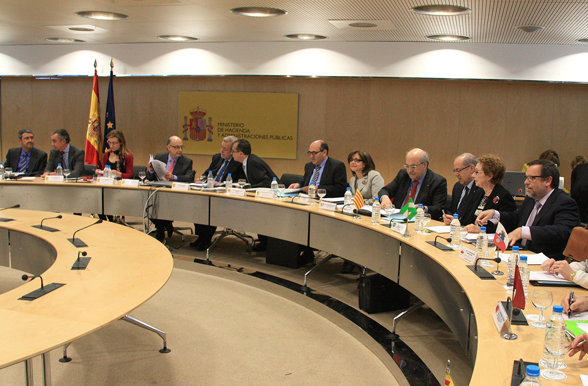The autonomous communities have been waiting two years for the Spanish Government to reform the financing model
The new system was to come into effect in January 2014 but the State Government has postponed the reform, replacing it with loans to the autonomous communities.

Fiscal and Financial Policy Council | Source: ACN
In December 2009, the Spanish Government approved law 22/2009, which regulates the financing of the autonomous communities, except Navarre and the Basque Country. The new financing model increased the participation of the autonomous communities in collecting the chief taxes (VAT, personal income tax, excise duties) and raised the hope of major improvements in terms of financial autonomy and sufficiency. Yet in practice the complexity of the model merely perpetuated the defects and arbitrary features of the previous system.
The main defect of the current model is that it underfinances the collective of autonomous communities. The split of tax revenues between Central Administration and Autonomous Communities is essentially set unilaterally by the Central Administration. A second defect is the lack of correspondence between the tax capacity of certain communities (tax income that the latter contribute to the common fund of the system) and the resources that these same autonomous communities receive after applying the equalising systems of the model. Catalonia is one of the autonomous communities most harmed by this system. In 2013 (last year with available figures), Catalonia was the second community out of a total of fifteen1 in income per capita contributed to the model and the tenth in resources per capita received. And, if we take into account the cost of living differential, it falls to fourteenth position.
As a result of all this, the transfers that the Generalitat of Catalonia receives via this financing model (which accounts for the major part of its budgetary revenues) are insufficient to cover the expenditure budgeted for essential services. It should be borne in mind that the autonomous communities are the administrations responsible for providing basic welfare services including health and education. Annex 1 of this article describes how the current model operates.
Liquidity resources instead of budgetary resources
Law 22/2009 established that the current financing system, which came into force in 2009, was to be reformed in five years with the new model coming into effect in January 2014. However, at this time the Spanish Government has failed to submit a proposal for a new system. Instead of remedying the shortcomings of the current model, the Spanish Government has chosen to rely on the FLA (Autonomic Liquidity Fund), a device created by the State in 2012 to provide liquidity to those communities which as a result of the debt crisis encountered difficulties in entering the financial markets. The practical effect has been that the budget resources which do not reach the autonomous communities via the financing model have been replaced by liquidity resources which are loans, increasing thus the control and dependence on the Central Government.
The Catalan Ministry of Economy and Knowledge has sent the Ministry of Finance of the Spanish Government different reports analysing the inefficiencies and negative effects of the current model. Annex 2 of this article will describe the chief conclusions of these reports.
1Even though there are 17 autonomous communities in the Spanish State, the financing model is applied only to 15 communities, as the Basque Country and Navarre have a separate regime.




